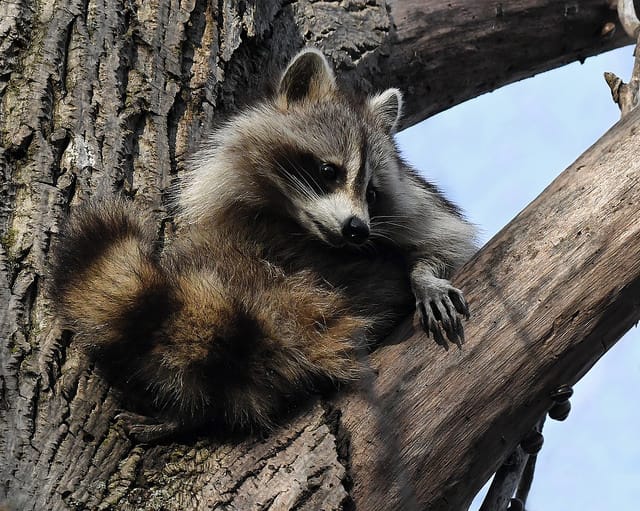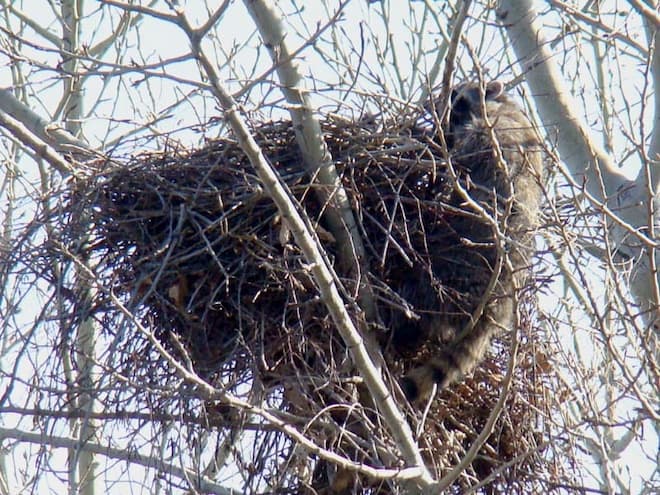A raccoon is a small nocturnal rodent that is about 7 to 12-inches long weighing about 20 to 30 pounds. In the urban areas, raccoons are known to grow well over 60 pounds relying on refuse. They have masked eyes, grayish brown fur with a bushy banded tail. Raccoons have been known to flourish in human-inhabited areas. They are highly adaptable and extremely smart animals that can live comfortably in the suburbs, cities as well as rural areas.
Raccoons are omnivorous and will feed on anything from insects, fish, young mammals, eggs to vegetables fruits and nuts. While they are mostactive during the night, they are often spotted foraging for food during the day. Raccoons have been known to make their nests almost anywhere including brush piles, tree cavities, chimneys, abandoned burrows, attics, storm sewers, crawl spaces, attics and garden sheds.
Raccoons are as smart as cats and dogs. Their forelimbs offer them great manual dexterity. They have a great memory and have routines for food and shelter. They can also remember good places to get food and shelter.
Where do raccoons live?
Raccoons can be found all over Canada in rural and urban areas. They are nocturnal creatures and are most active during the day. Raccoons prefer areas that have great tree cover and a water source. However, they won’t skip a chance to live in your attic. In the rural areas, raccoons thrive close to lakes, rivers, and streams. Where humans have developed, raccoons have altered their living to match human-made offerings. They will be found living close to food sources such as gardens, dumpsters, and parks.
Raccoons have a home range; this is a territory they have a stake on. The range will largely depend on the number of raccoons living in that specific site. However, raccoons in the urban area have smaller ranges compared to those in the rural setting. Ranges begin anywhere from one square mile to 20 square miles.
Raccoon nest
Once the raccoons have an identified a spot that offers them sufficient food and water, they will begin building a nest. In the rural areas their dens are often burrows abandoned by other animals. Raccoons in the wild have been known to build their dens in hollow tree trunks.
In the urban setting, raccoons can build their nest anywhere from an abandoned vehicle, chimney, crawl space, attic or any protected location that they can access. They have also been known to build their nests underwood pile or underneath homes. Raccoons start building a nest before winter; this is their ideal breeding time. These nests are built by the female to nurse her babies during the winter.
Are raccoon nests dangerous?

It’s best to keep a hands-off approach when you notice a raccoon nest. Raccoons are seen as cute and curious animals, and more often than not we are tempted to feed them or welcome them to our property. This is not a wise course of action. Raccoons wandering during the day could be a sign of foraging for extra meals, but it could also mean they are sick. Just like skunks and wild foxes, raccoons are exposed to rabies. Getting to close to them could be deadly. They only need to be approached by a professional.
What should I do when I locate a raccoon nest?
The best thing to do is to contact your local pest control expert. Raccoons are unpredictable, getting too close to their nest could provoke them into protecting their babies. Therefore, if you notice signs of raccoons in your attic or property, get in touch with a pest removal professional such as Raccoon Removal Ajax. They will be in a much better position to help you get rid of your problem.

